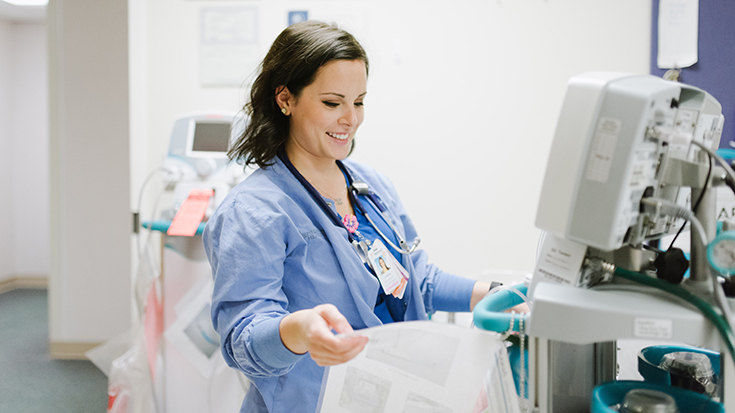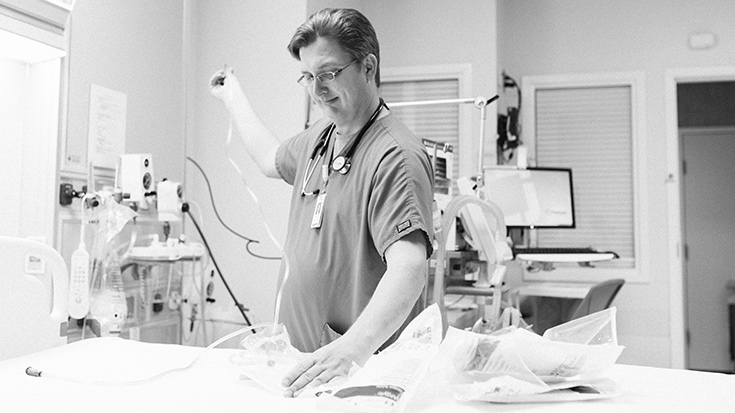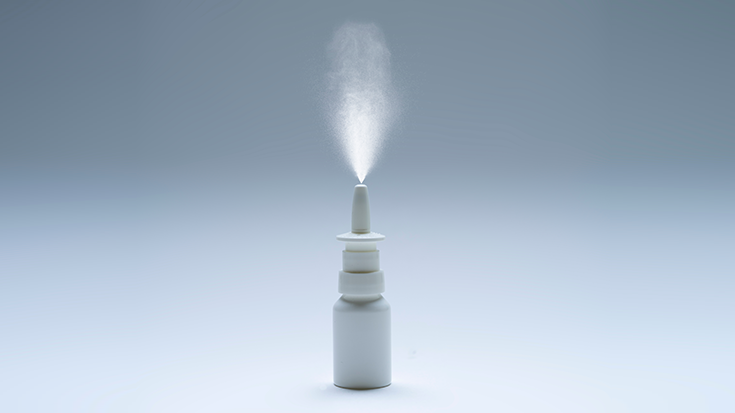
Respiratory therapists regularly care for patients awaiting a lung transplant, and they are actively involved in helping those who have had a lung transplant make the most of the gift of life they have received.
RTs at Piedmont Atlanta Hospital in Atlanta, GA, are involved in the step that falls in-between as well. Since getting involved in the hospital’s Organ Recovery Center (ORC), they have helped the organization significantly increase the number of organs available for transplant.
“The Organ Recovery Center at Piedmont Atlanta Hospital, in partnership with LifeLink of Georgia, is one of three hospital-based ORCs in the U.S.,” explained Victoria Liu, BS, RRT, RRT-ACCS, RRT-NPS, clinical education coordinator for the respiratory care department. “We are the only one out of the three with dedicated respiratory therapists responsible for managing mechanical ventilation using a lung resuscitation protocol to optimize organ function and improve the chance of lung procurement for transplantation.”
Essential to Care
The ORC celebrated a major milestone in March when it reached one full year of operation. During that time, 219 organ donors were transferred to the ORC. In addition, thanks to the standardized care model, 671 organs were transplanted in people across the country.
According to data provided by ORC leadership, the ORC has been able to maximize each donor’s gift of life by increasing the number of organs transplanted per donor by almost one entire organ when compared with organ donors outside the ORC.
ORC Manager Jennifer Taylor, RN, says RTs were brought on board because so many patients referred to the ORC would be on full life support.
“Including RT on the ORC team was essential in ensuring that the care provided to organ donors in the ORC was the same as care provided to any living patient in another Piedmont ICU,” she explained.
Given that the center was established during a global pandemic that needed RTs more than ever, it was no small feat to include them on the team, but everyone was determined to make it happen.
“We recognized the importance of RT being included in this new program. We had to make a commitment to prioritize the initiation of this program,” said RT Department Director Lauranne Scates, BS, RRT, PDE-C. “We were involved with every stage of planning, from equipment ordering and supply stocking to policy and pathway development.”
Department Manager Dareja Finney, MSHS, RRT, RRT-ACCS, RRT-NPS, said the department worked hard to ensure a successful launch by conducting a careful selection of RTs to work in the center during its first month. The goal was to “solidify relationships and confidence of physicians and nurses who had no prior working experience with RTs,” she said.

An integral part of the team
Currently, RTs are available to staff the ORC 24/7, with the typical RT-to-patient ratio being 1:1 or 1:2, depending on the organ procurement pathway being used.
Therapists assigned to the center have completed adult critical care training. They must also be familiar with the lung resuscitation protocol and advanced respiratory therapies, such as intrapulmonary percussive therapy, mechanical ventilation, lung recruitment maneuvers, advanced airway management, and lung protective strategies geared toward lung and organ procurement.
Taylor believes the RTs who work in the ORC have embraced the center’s mission to maximize each organ’s gift through donation.
“They are a part of the team just as the ICU RN, NP, intensivist, and LifeLink coordinator, and we rely on their expertise to help us carry out this mission,” she said.
How the process works
Victoria Liu explains how the process works.
“When a patient is admitted to the ORC, we place them on the ventilator with specific mode, Vt, PEEP, and FiO2 ranges and obtain a baseline ABG,” she said. “Then, based on ABG results and their lung condition/past medical history, the ORC physician will determine if the patient’s lung meets criteria for organ donation.”
If the patient is determined to be an eligible lung donor, the therapist places them on the lung recruitment and pulmonary hygiene therapies to optimize the lung.
In cases where there is no obvious exclusion to lung donation, but the patient’s lung condition is suboptimal, the therapist will place the patient on higher PEEP, initiate additional therapies such as proning, and perform pulmonary hygiene and lung recruitment maneuvers on a more frequent basis to improve the condition of the lung.
The ultimate hope is to get the lungs to the point where they can become eligible for donation.
Physicians see many benefits
What do physicians think about the value that the RTs have added to the ORC team? ORC Medical Director Clark Kensinger, MD, offered the following bullet points when asked how he believes RTs have made a difference —
- Smooth donor admissions, as the RTs follow initial evaluation protocols.
- Extremely efficient at setting up and assisting with frequent bronchoscopies.
- Closely follow recruitment protocols to assist with lung resuscitation.
- Troubleshoot/adjust protocol-based recruitment maneuvers based on peak airway pressures, plateau pressures, and/or hemodynamic issues.
- Assist with safe proning of patients.
- Thoughtful and expert input in the challenging donor with oxygenation/ventilation issues.
- ETT exchanges for cuff leaks, etc., when there is an airway issue.
- An incredibly valuable member of the team and contributor to the success of the ORC to improve transplant rates.
Jennifer Taylor echoes that last statement.
“A huge part of the success of the ORC is attributed to the collaboration and teamwork from the respiratory department,” she said.
Victoria Liu says RTs are a natural for the job.
“We believe RTs are the right clinicians because mechanical ventilation management and the bronchopulmonary hygiene therapies we provide are our areas of expertise.”
Statistics gathered over the past year bear that out. Among the 671 organs transplanted in the first year of operation, there were —
- 83 heart transplants, including one at Piedmont Atlanta.
- 111 lung transplants.
- 172 liver transplants, including 36 at Piedmont Atlanta.
- 280 kidney transplants, including 55 at Piedmont Atlanta.
- 19 pancreas transplants, including four at Piedmont Atlanta.
Since opening in March of 2021, the center’s organ transplanted per donor (OTPD) for lung transplant was 0.52, while the OTPD for non-ORC donors was 0.23.
“Data from April 2021 to February 2022 showed that we had one more lung transplant for every 15 donors per month and 20 more lung transplants for every 300 donors per year,” said Dr. Kensinger.
Therapists like the close knit team
Michael Harvey, RRT, and Caitlin Zorn, RRT, are two Piedmont therapists who regularly work in the ORC, and they both say the experience has left them with a new appreciation for organ donation.
“The ORC is a unique unit that allows us to work closely together as a cohesive unit with one goal in mind, applying our skills and developing and using protocols to optimize the organs for the potential recipients,” said Harvey. “Each member of the ORC team plays an integral part in supporting optimal health and function of the donor organs.”
Being a part of a team with one goal in mind — optimizing organs for transplant — has been incredibly rewarding, he continued, and the selflessness of the donors and their families has had a lasting impact not only on the people who receive the organs but on everyone on the team.
“I’m proud to play a role in that,” he said.
Zorn says one of the main reasons why she likes working in the ORC is that it allows her to see her hard work pay off in an opportunity for life for someone else — and, if they are lucky, the opportunity for multiple lives to be saved.
“You are able to utilize a sad situation and help turn it positive, which can help provide closure and purpose for a family left behind,” she said. “The hard work, attention, and compassion by all of the ORC staff never cease to amaze.”
A new opportunity
Is organ recovery a new specialty area for RTs? The therapists at Piedmont Atlanta believe there is plenty of reason for more departments to get involved.
“It creates opportunities for your RTs to gain knowledge of this patient population and learn a new skill,” said Victoria Liu. “The success of our ORC demonstrated the value of having RTs on the team.”
There are plenty of softer benefits too.
“Our staff that works in the ORC feel valued and respected by their peers,” said Lauranne Scates. “Their hard work is meaningful because with every organ they help recover, they help someone to have a second chance at life!”
Email newsroom@aarc.org with questions or comments, we’d love to hear from you.















